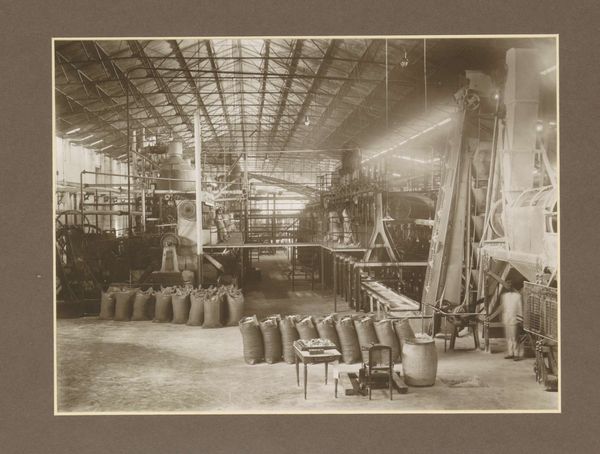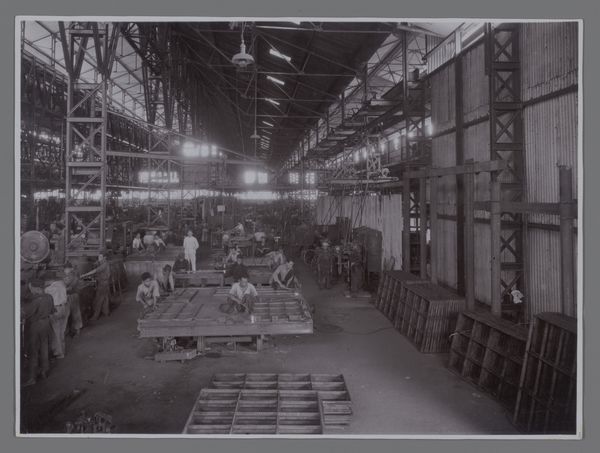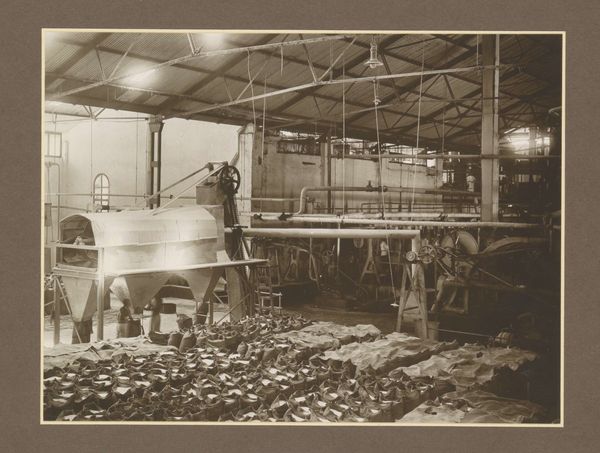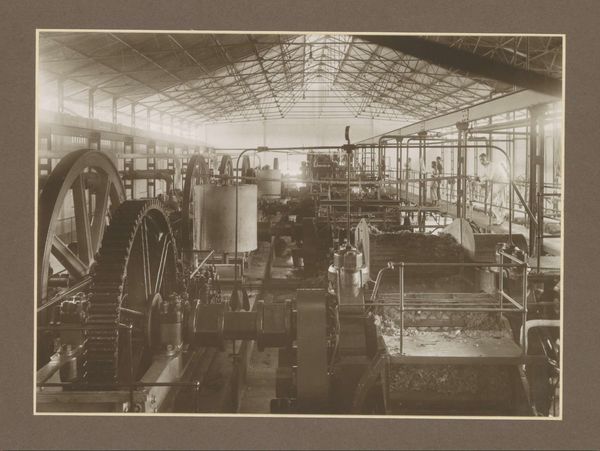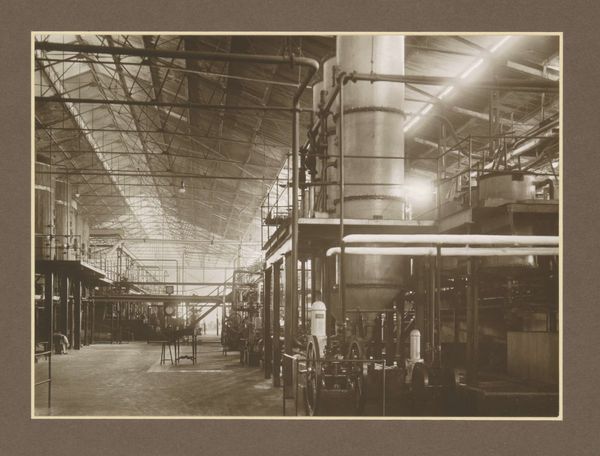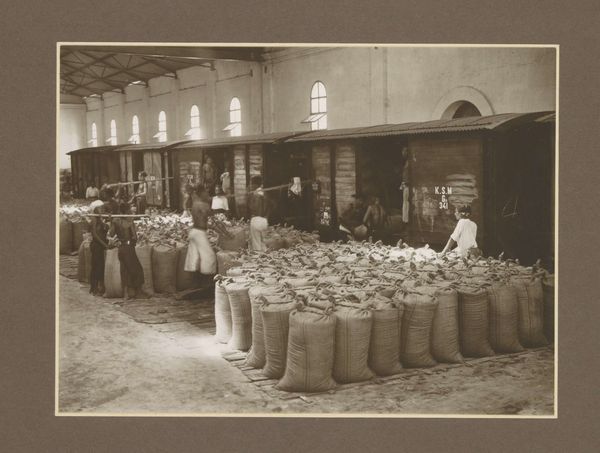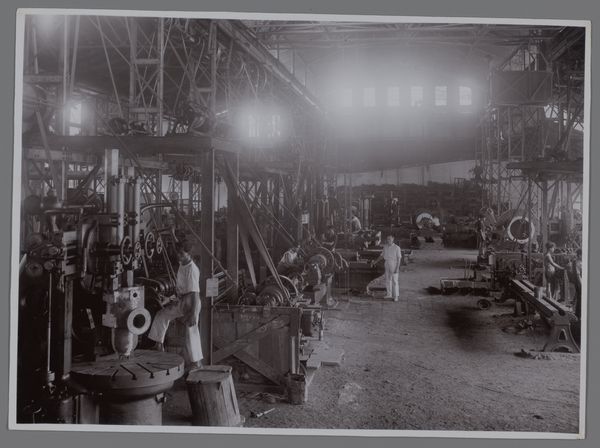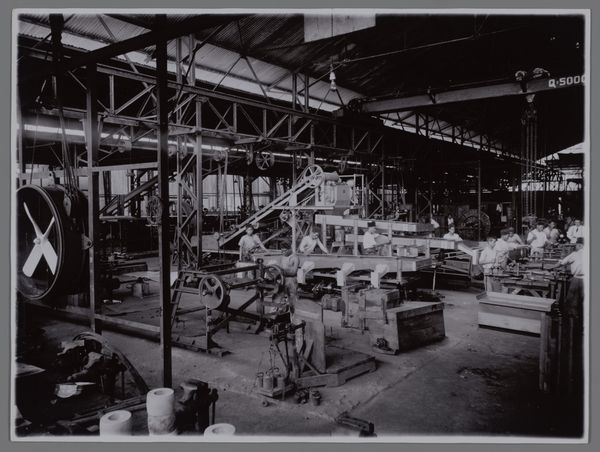
print, photography
# print
#
archive photography
#
photography
#
historical photography
#
geometric
#
realism
Dimensions: height 297 mm, width 450 mm
Copyright: Rijks Museum: Open Domain
Editor: Here we have a print of a photograph, taken sometime between 1925 and 1930, by Isken. The title is "Centrifugehuis van suikerfabriek Meritjan te Kediri op Java," which I think translates to something like "Centrifuge house of the Meritjan sugar factory in Kediri, Java." The light in this photograph almost feels sculptural, carving out these geometric shapes. What catches your eye in this image? Curator: The composition is immediately striking. The photographer has masterfully arranged the visual elements to create a sense of depth and order. Notice the strong diagonal lines established by the rows of sacks. They draw the eye from the foreground into the depths of the factory. Editor: Yes, those sacks form a really clear line, it makes my eye travel to the back of the image! Curator: Exactly. And how do these repeated forms contribute to the overall feeling of the photograph? The sacks become abstract shapes through their repetition. There’s almost a minimalist aesthetic at play. Furthermore, the contrast between the solid forms of the sacks and the intricate machinery in the background creates a dynamic visual tension. Editor: So it's not just a record of a place, but the arrangement gives it meaning, too? Curator: Precisely. The arrangement informs the viewing experience. Consider how the light interacts with the textures; the rough weave of the sacks versus the smooth surfaces of the machinery. This tactile quality adds another layer of complexity to the work. Through an understanding of these formal relationships we arrive at a greater appreciation. Editor: That makes sense. Looking at the contrasts and lines has totally changed how I see it. It's less about just seeing a factory, and more about appreciating the composition itself. Curator: Indeed, by deconstructing these visual components, we have hopefully enhanced our comprehension of its aesthetic language.
Comments
No comments
Be the first to comment and join the conversation on the ultimate creative platform.
